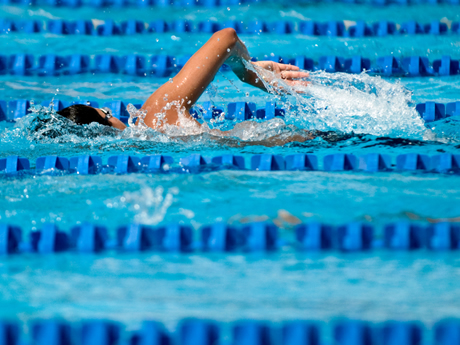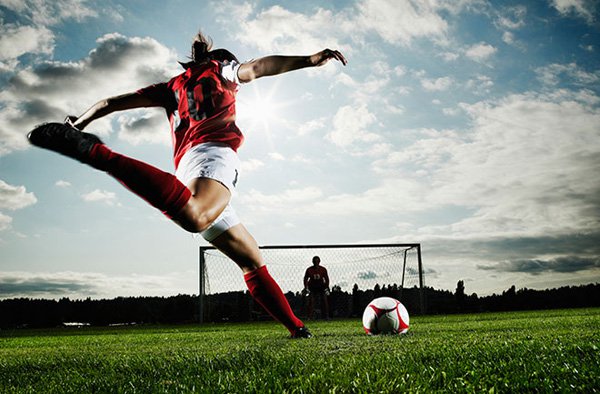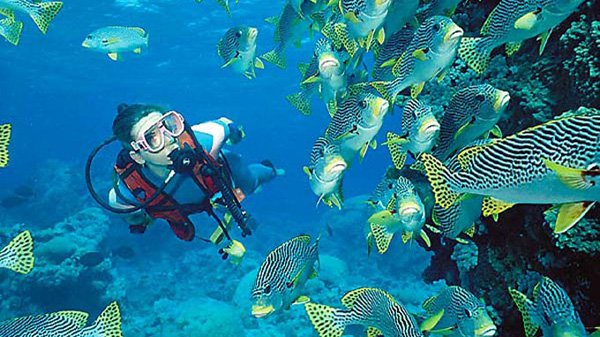On the first day of Scuba class, a student learns how important buoyancy is in diving. Once certified, a diver will spend a better portion of his/her training perfecting their buoyancy. Simple fact, buoyancy is more art than science. With good technique, the right training, ongoing practice and the right equipment, you can perfect your buoyancy. The goal of any diver is to hover effortlessly through the water. When you “dial in†your buoyancy, you will reap the benefits such as, better air consumption, dive with less exertion, protect the environment and safely control your ascents and descents, Great buoyancy means you are diving safer and having more fun.
Following are ten tips to assist you in developing better buoyancy:
1. Get more training: Most divers often use bad habits to compensate for poor technique. Without the right training, these bad habits become memorized and hard to break. Stumbling through the water becomes the status quo for many divers. Get enrolled in a class. Learn the right techniques to proper buoyancy. Perfect the ultimate skill for being a Scuba diver, without the crutch of bad habits. With more training, you will achieve the goal of spending as much time as possible, during your dive, neutrally buoyant.
2. Weight yourself correctly: One of the first skills you will learn in any buoyancy class is how to weight yourself correctly. if you are overweighted (one of the bad habits discussed above), you will need more air in your BCD to keep you off the bottom. More air in your BCD means more management as you ascend and descend. If you are weighted incorrectly you will spend little time neutrally buoyant. In fact, you will be struggling back and forth between being positively or negatively buoyant.
3. Spread your weight out: Many divers stack their weight in a single area on their body. Usually in a weight pocket or all on a weight belt. This misaligned weight placement usually causes the head to be in a downward or upward position. Seldom does it lead to perfectly horizontal position in the water. The rule of where the head leads, the body will follow applies when this happens. Thus, if the head is in an upward position, the diver will have a tendency to rise up, causing the air in his or her BCD to increase and making the diver positively buoyant. When this happens a diver must compensate by dumping air. When a diver has his or her head in a downward position, they often find themselves crashing into the bottom. Becoming a negatively buoyant diver. When a diver’s weight is “trimmed†correctly, they tend to be completely horizontal in the water and takes little or no effort to maintain a depth.
4. Own, don’t rent your gear: Every time a diver changes their gear configuration and exposure protection, their buoyancy changes. If you are constantly renting gear, you never have the same configuration thus your buoyancy characteristics become a wild card on every dive. The amount of weight needed, where weight can be placed, the buoyancy characteristics of the gear itself all change when you continuously rent gear. If you own your own gear, the configuration and the dive characteristics will be a constant on every dive. Buy right, buy once. Gear choice is an integral ingredient to mastering buoyancy and becoming an advanced diver.
5. Streamline your gear: Once you have purchased your own gear, you should take some time in the accessories section of your local dive shop. Find the right clips and snaps to “tighten†up your configuration. In order to protect the environment and your gear, it is important that loose gear is attached closely to the body. This practice is called streamlining. When you gear is streamlined, you will find that it does not create drag which can upset your relaxed neutral buoyancy.
6. Breathe control: Divers should always have control over their breathing. I have met some divers that have had great success learning yoga as a way to control their breathing. A good steady, continuous breathing pattern is a great way to maintain a constant depth and neutral buoyancy. As divers become more adept with diving, breath control is the way they make minor depth changes.
7. Stay in shape: This almost seems like an obvious tip and has benefits far outweighing just Scuba diving. Divers who are in shape require less weight, handle gear easily, breathe easier and have better buoyancy. A good, regular cardio-vascular workout is essential for mastering buoyancy technique.
8. Slow down: Most divers swim too fast. Not only do they miss things as they motor past them in the ocean, but swimming fast over-exerts divers. This could lead to abnormal air consumption and minimal bottom time. Further, if a diver becomes too over-exerted, it could lead to hyperventilation or a dangerous underwater scenario. In many instances, divers swim fast because it is a bad habit that they have picked up to overcompensate for poor buoyancy technique. Momentum is a bad habit that can keep a diver at a single depth, regardless if they are mildly negative or positive buoyant. Slow down, if a diver can’t maintain a constant depth while hovering, more training is probably required.
9. Observe other divers: Watching other divers and how they manage their buoyancy is a great way to learn great technique and observe bad habits. With the right mentor, observation can be a powerful training tool. Be mindful of what you are observing and take advice only from those folks who are qualified to give it.
10. Practice often: Skills rust when they are out of water. If divers do not practice your buoyancy skills and dive often, they will lose their perfected buoyancy. Divers should be in the water on a regular basis. It is recommended, divers practice their skills at least once per month. If a body of open water is not available, a pool is still a good option to practice skills.
Once you have your buoyancy perfected, drifting through the reefs of Cozumel, gliding down the steep walls of the Blue Hole in Belize and floating along side sea turtles in Hawaii become far more enjoyable.
Giant stride into a buoyancy clinic or specialty class and master neutral buoyancy.
Dive Safe and Have Fun
For more information on Scuba training and buoyancy, go to the Academy of Scuba
6 Sets to Build Swimming Endurance

An Online Shop To Purchase High Quality Soccer Uniform For Men And Women

Four Most Popular Types of Scuba Diving

Copyright © www.mycheapnfljerseys.com Outdoor sports All Rights Reserved